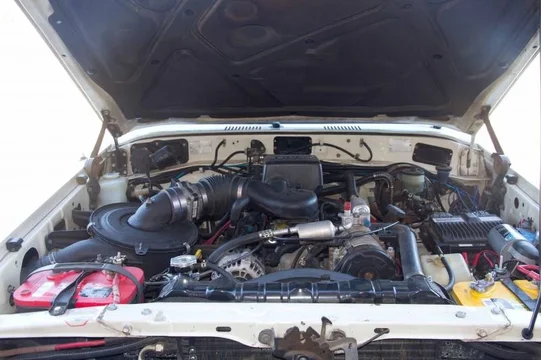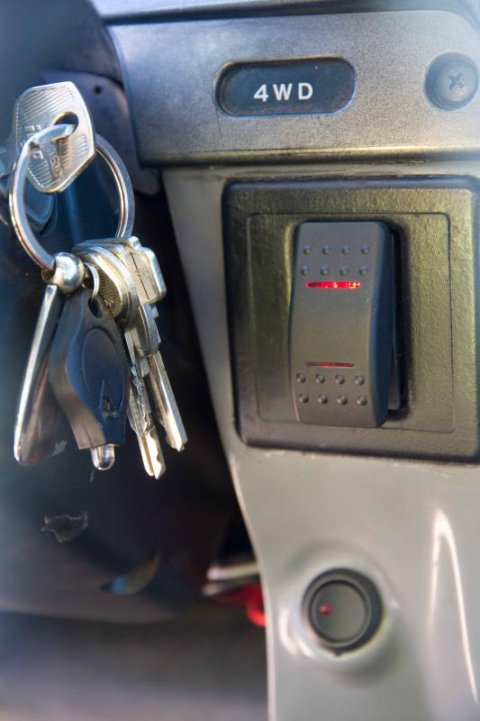I would appreciate anyone's feedback if you wouldn't mind taking a few minutes to read through this minor tome. I have an '86 FJ60 with a 5.7 Vortec Conversion. It has had fuel supply issues from the beginning (2004). A fairly specific set of conditions will lead to failure: Running at highway speeds, usually with a significant load (a trip load out or a trailer), high ambient temperature (90-100+ degrees F.), usually a sustained grade, running for about one hour, and usually some altitude (usually around 3000 to 4000 feet). Failure comes abruptly, usually while ascending a grade. There are only a few seconds warning. It stops and fails to restart. Plenty of voltage from the battery and the starter turns over but the fuel pressure is consistently under 50 psi (Vortec require >50 psi) . Often I don't have time to leave the traffic lane, or often there is a two lane road with no shoulder so I am stuck in the middle of the road. Engine temperature is fine. The usually remedy has been waiting for the vehicle to cool, then restarting and limping along to a point where I can change the fuel pump. Invariably, that takes care of things for the rest of the trip, although the severity of the stated conditions are usually not repeated (for example, we get to Moab or wherever our destination is and driving around town and trail goes without incident). We finally decided that the problem must be fuel pump overload/overheating (in the GM setup, it is supposed to be in the tank). We installed an inline fuel pressure gauge, an inline heat sink, and two pumps in line that can be switched on the fly. A cool setup, only it doesn't work. I gave it the definitive workout this summer in 90+ degree heat driving through the Navajo Reservation and some local mountains and found that switching to a "fresh" pump does not give me fuel pressure back. The key maneuver I performed which, I believe, has clinched the alternate diagnosis (vapor lock) is that I vented the fuel system as if I was changing the fuel pump and instantly restarted the vehicle and drove home. The next step (fixing the problem), is less clear. But given that, we think that, the key, remediable factor generating the vapor lock is heat therefore we believe that a critical temperature in the engine compartment is likely creating the vapor lock. Therefore, my plan is to take a drive in characteristic conditions with the hood off, which should drastically cool under hood temps. If this prevents this phenomenon (and thus proves our hypothesis) the next step is not so clear. We are considering insulating the fuel line within the engine compartment to prevent the relatively sudden increase in temperature around the fuel lines that occurs as it enters the engine compartment. Beyond that, I am looking for any other ideas or experience with this problem that any of you might have with this, or similar problems.
For those of you who have finished this discourse I appreciate any feedback you may have. It is a cool truck. I have put an incredible amount of time and energy (and money) into this project but we really need to get to the bottom of this problem so we can drive it and trust it to get to our destinations; it has ruined more vacations than I care to count.
Sorry this is only my second post. I've been lurking for a long time though.
Thanks
David
For those of you who have finished this discourse I appreciate any feedback you may have. It is a cool truck. I have put an incredible amount of time and energy (and money) into this project but we really need to get to the bottom of this problem so we can drive it and trust it to get to our destinations; it has ruined more vacations than I care to count.
Sorry this is only my second post. I've been lurking for a long time though.
Thanks
David



